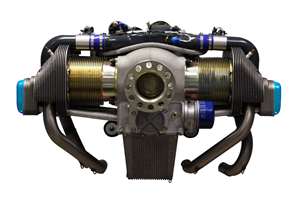To highlight the Phoenix LSA cross country efficiency let's take a look at some numbers - 36 ft wing span option - cruise 900 nm (approx 8 hours) at 118 knots at 5,000 rpm with 26 gallons total fuel (two 13 gal tanks). For glider operations - 49 ft wing span option - 32:1 glide ratio, 20,000 ft service ceilings, and 1000 fpm powered climb dual (1200 fpm solo).
AVweb Video Review
Courchevel Dreams!
Reference Section -
Phoenix Air USA - http://www.phoenixairusa.com/Home_Page.php
The second Paradigm of Efficiency covered in this report is the Pipistrel Virus SW. This is another all composite and extremely efficient design. The Pipistrel Virus (Vee-Roos) is actually a very fast airplane with bragging rights low fuel burn - 3.0 gph at 120 kts! The VNE for the Virus is set at 163 kts with a turbulence penetration speed of 130 kts. Build the Virus as an Experimental category aircraft and you have one heck of a cross country speedster (of course the LSA version is speed limited to 120 kts for max straight and level speed). You can order a Virus with a 80 Hp or 100 Hp Rotax 912 engine and 3 blade in-flight adjustable prop (LSA version has the flight adjustable prop disabled to meet the category requirements). Set power to 75% in the 100 Hp option and you can hit cruise speeds of 147 kts!
The Virus SW has up to a 7.5 hour endurance with 26 gallons total fuel (approx 765 to 890 nm range). The standard empty weight is approx 635 lbs with 1320 lbs as the max structural weight - this leaves a total payload of more than 660 lbs. Full fuel payload is listed at approx 497 lbs - more than adequate for two large pilots and some baggage. A superb interior with Audi designed seating - how can you go wrong? Class leading speed, extended range, and up to a 20,000 ft service ceiling, makes the Virus SW a champion of efficiency!
Aero TV Review
Pipistrel Business Story
Reference section -
Pipistrel Factory website - http://pipistrel.si/plane/virus-sw/overview
Pipistrel USA - http://pipistrel-usa.com































